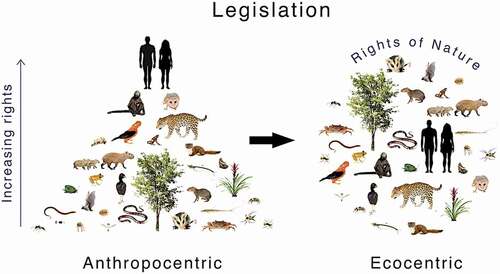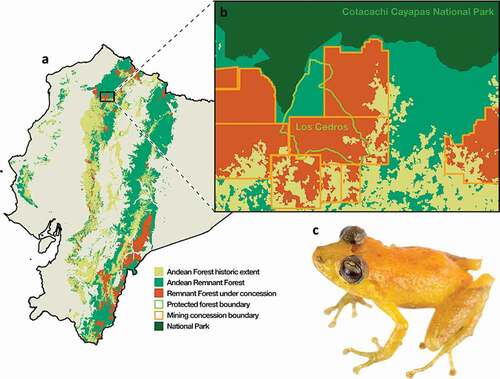Figures & data
Figure 1. Recognizing that Nature has rights denotes a shift in the human-nature relationship, from one between a subject with agency (humans) and an exploitable object (Nature), to a relationship of mutual respect and tolerance, towards permanent coexistence

Figure 2. Conflict between mining activities and biodiverse ecosystems. (A) Remnant native Andean forest in Ecuador (green; data from the Ecuadorian Ministry of Environment), showing deforestation on the western slope of the Andes (yellow), and overlap between remnant forest and current mining concessions (red; data from the Ecuadorian Agency for the Control and Regulation of Mines). (B) Inset, showing the area around Los Cedros; note the overlap between mining concessions and remnant forests. (C) The Los Cedros rainfrog (Pristimantis cedros) is one of hundreds of known endemic and endangered species documented from Los Cedros (Table S1). This frog is only known from Los Cedros and the nearby Río Manduriacu Reserve, areas concessioned to two mining companies (the Canadian Cornerstone Capital Resources, and the Anglo-Australian BHP Billiton)

